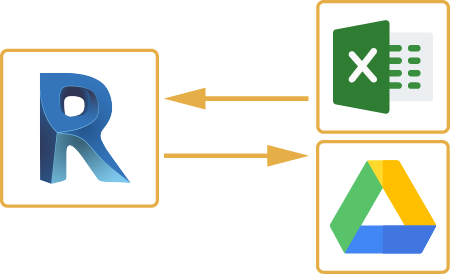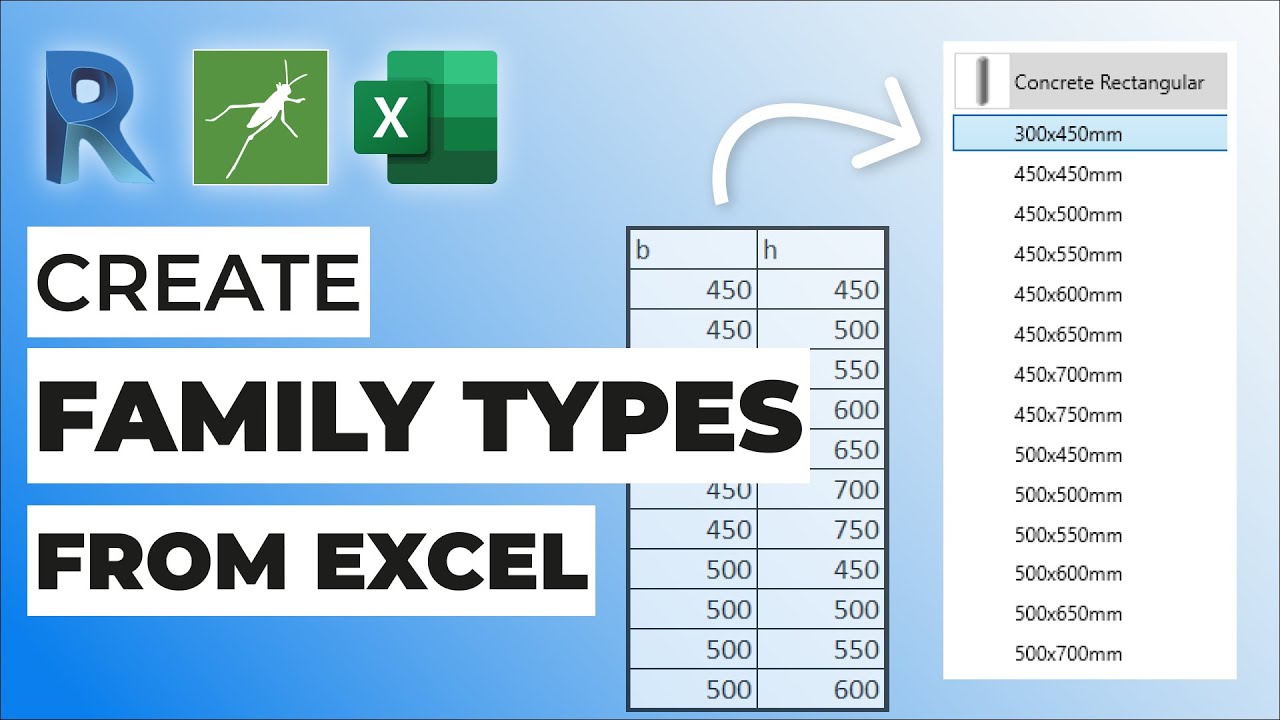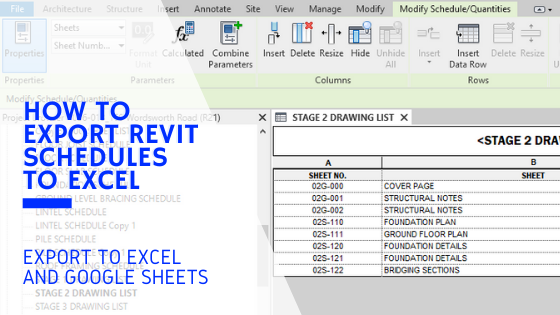Revit Add Ins: Increasing Your Layout Capacities
Wiki Article
Damaging Obstacles: Excel Importation Techniques for Advanced Revit Users
Discover different data importation approaches and master Excel combination to improve your Revit modeling capabilities. With our pointers and techniques, you can get rid of importation difficulties and become a real professional in utilizing Excel for your Revit tasks.Advanced Revit Users: Leveraging Excel for Importation
You can easily leverage Excel for importation as a sophisticated Revit user. Excel is an effective tool that can considerably enhance your process and performance in Revit. With its ability to take care of big quantities of data and carry out intricate estimations, Excel can be an important property in handling and organizing your job details.One means to leverage Excel for importation is by utilizing the "Web link Excel" feature in Revit. This feature enables you to link an Excel spread sheet straight right into your Revit project, enabling you to update and integrate information between the two programs. This can be particularly helpful when dealing with routines or tracking adjustments in your task.
An additional means to make use of Excel is by utilizing the "Import/Export" function in Revit. This function permits you to import and export information in between Revit and Excel, offering you the adaptability to work with data in both programs. You can import data from Excel into Revit to produce aspects such as doors, rooms, or walls, and you can also export data from Revit to Excel for additional analysis or reporting.

Exploring Data Importation Techniques in Revit Making Use Of Excel
Discovering exactly how to import information from Excel right into Revit supplies reliable methods for integrating information. When you import information from Excel, you can seamlessly move information such as room schedules, material lists, and equipment data right into your Revit task. This procedure enables you to conserve effort and time by preventing hand-operated information entrance.To import data from Excel into Revit, you can utilize the "Import/Export" feature. This feature allows you to map the Excel information areas to the equivalent Revit criteria, making certain that the details is appropriately designated within the design. By selecting the appropriate import options, you can control how the data is imported and just how it connects with your job.
Another method for importing information from Excel into Revit is by using Eager beaver. Eager beaver is an aesthetic programming device that incorporates with Revit and permits you to automate tasks and workflows. With Dynamo, you can create custom manuscripts that import data from Excel and manipulate it within your Revit task. This technique provides much more flexibility and modification options.
Grasping Excel Assimilation for Advanced Revit Modeling
One key strategy is importing data from Excel spread sheets directly right into your Revit model. With a couple of easy steps, you can map the Excel columns to the matching Revit criteria and import the data precisely.An additional useful technique is exporting information from Revit to Excel. This enables you to remove details from your design, such as schedules or product quantities, and assess it in Excel using formulas, charts, or other effective tools. By leveraging the abilities of Excel, you can execute complex estimations, create custom reports, and gain valuable insights into your job.
Along with information transfer, Excel assimilation can automate repeated jobs in Revit. By producing macros or manuscripts in Excel, you can automate processes like producing views, producing sheets, or using basic families - import excel into revit. This not just saves time yet likewise makes sure uniformity across your job
To grasp Excel combination in Revit, it is crucial to recognize the data framework and how Revit connects with Excel. By acquainting on your own with the readily available devices and methods, you can open the complete potential of Excel combination and take your Revit modeling to the following degree.
Overcoming Importation Obstacles: Excel Techniques for Revit Specialists
When overcoming importation obstacles, it's essential to be acquainted with efficient Excel methods that can benefit experts in Revit. As an innovative Revit customer, you comprehend the importance of effortlessly importing information from Excel into your revit plugins tasks.
Another beneficial technique is utilizing the "Transpose" function in Excel. This permits you to convert information from rows to columns or vice versa. When importing information right into Revit, this can be specifically practical when you have data in an upright format in Excel, however you require it to be in a horizontal style in Revit.
Furthermore, using Excel solutions such as VLOOKUP and INDEX-MATCH can significantly aid in mapping data from Excel to Revit. These formulas permit you to look for specific values in Excel and get corresponding data from one more column. When importing huge datasets into Revit., this can conserve you time and initiative.
Excel Data Importation Advice for Advanced Revit Users
By familiarizing on your own with efficient Excel suggestions and tricks, you can boost your data importation process as an advanced customer of Revit. Furthermore, utilizing Excel's "Paste Special" attribute enables you to paste information from Excel into Revit while maintaining format, such as cell shade or font style. An additional practical technique is to use Excel's "Change and discover" feature to rapidly make adjustments to your data prior to importing it into Revit.
Final Thought
You have actually now found out important strategies for importing data from Excel right into Revit as an innovative individual. By leveraging the power of Excel assimilation, you can enhance your modeling procedure and overcome any importation tests that might develop. With these ideas and techniques, you will be able to understand information importation and enhance your Revit skills. So proceed, break those barriers and excel in your Revit jobs!
When importing information into Revit, this can be particularly useful when you have information in a vertical style in Excel, but you require it to be in a straight style in Revit.
In addition, utilizing Excel formulas such as VLOOKUP and INDEX-MATCH can significantly aid in mapping information from Excel to Revit. In addition, making use of Excel's "Paste Unique" function allows you to paste data from Excel right into Revit while maintaining format, such as cell shade or font design.
Report this wiki page